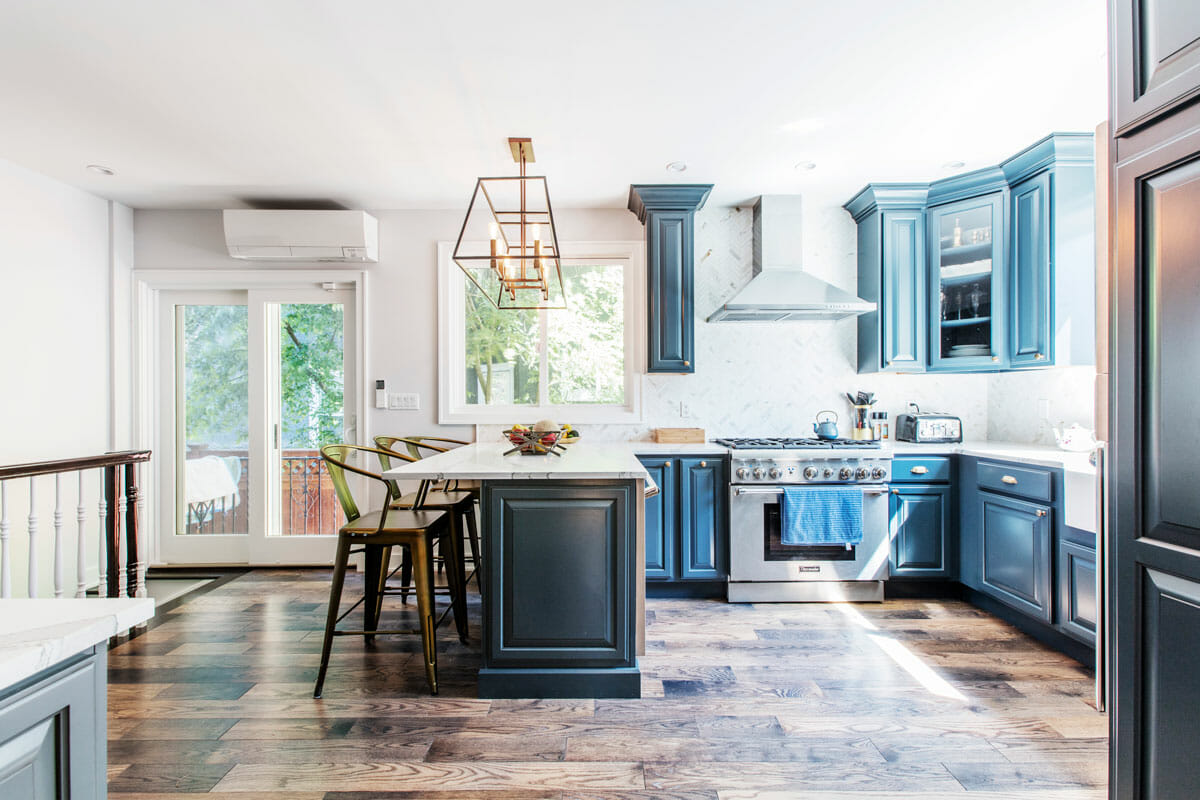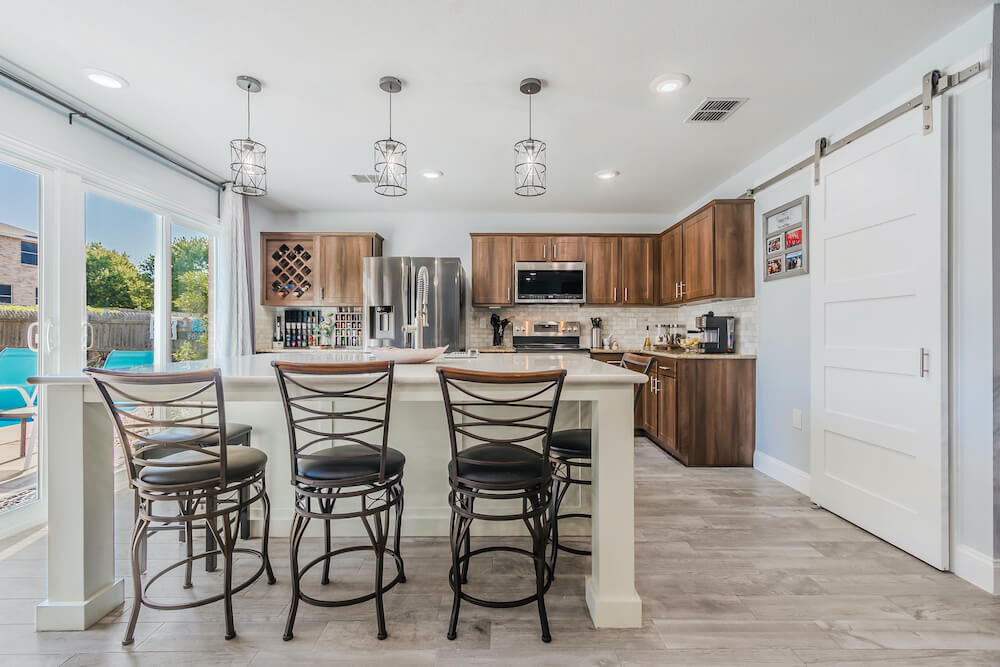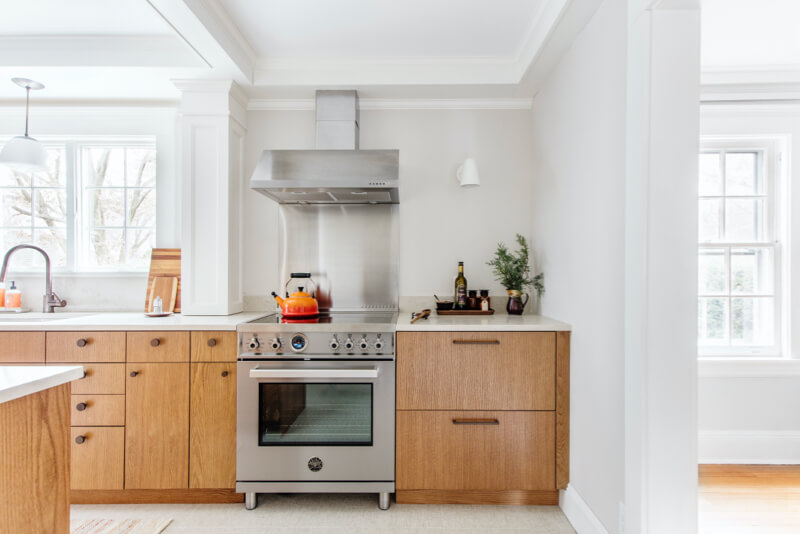How to Identify Old House Wiring Systems and When You Need to Replace Them
So you’ve just bought a charming old home – congratulations! The character, the history, the mature landscaping… it’s all part of the allure. But beyond the beautiful facade, there’s often a less glamorous reality: aging infrastructure. And when it comes to the safety and functionality of your home, few things are as critical as your electrical wiring.
Old house wiring isn’t just about flickers and tripped breakers; it can pose serious safety hazards, from fire to electrocution. So, before you start envisioning your new kitchen or spa-like bathroom, let’s shed some light on what’s lurking behind those walls and when it’s time to call in the pros for a much-needed upgrade.

Post your project on Sweeten for free and make your dream renovation a reality. Sweeten simplifies home renovation by connecting homeowners with top-rated general contractors, handling the vetting process and project management. To learn more about how we can help, check out our home renovation services.
The Tell-Tale Signs: What Kind of Wiring Do You Have?
Understanding your home’s electrical past can help you anticipate its future needs. Here are some common old house wiring systems you might encounter:
1. Knob-and-Tube Wiring (1880s – 1940s)
This is the granddaddy of residential wiring. It consists of individual insulated copper wires run through porcelain “knobs” that support them and “tubes” that protect them when passing through wood framing.
How to spot it:
- Visible in unfinished areas: Look in your attic, crawl space, or basement. You’ll see ceramic knobs holding wires in place and ceramic tubes where wires pass through joists.
- Two-wire system: Knob-and-tube typically lacks a ground wire, making it less safe for modern appliances and increasing the risk of shock.
- Fabric or rubber insulation: The wires themselves are often covered in cloth or rubber insulation, which can become brittle and crack over time.
2. Cloth-Wrapped Romex / Non-Metallic (NM) Cable (1930s – 1960s)
This was an improvement over knob-and-tube, encasing multiple wires (usually two conductors and sometimes a ground wire) in a fabric-covered sheath. Sweeten brings homeowners an exceptional renovation experience by personally matching trusted general contractors to your project, while offering expert guidance and support—at no cost to you. Renovate expertly with Sweeten
How to spot it:
- Fabric outer sheath: Unlike modern plastic Romex, the outer jacket feels like woven cloth.
- Rubber or thermoplastic insulation: Inside, the individual wires might still have rubber insulation, which can degrade.
- Often ungrounded: Earlier versions typically lacked a ground wire.
3. Aluminum Wiring (Mid-1960s – Mid-1970s)
During a copper shortage, aluminum became a popular, cheaper alternative for household wiring. While not inherently bad, its properties make it problematic in many residential applications.
How to spot it:
- Visible markings: Look for “AL” or “Aluminum” stamped on the cable jacket.
- Color: The wires themselves might appear a duller, silvery color compared to copper.
- Larger gauge: Aluminum requires a larger gauge wire for the same current carrying capacity as copper, so the wires may appear thicker.
- At outlets and switches: You might see aluminum wires connected to devices (though this requires opening up an outlet or switch box – proceed with extreme caution or call an electrician).
When Is It Time to Replace? The Non-Negotiables
While a home inspection will give you a good overview, here are the critical scenarios where old wiring isn’t just a recommendation but a must-do for safety and functionality.
1. If You Have Knob-and-Tube Wiring
This is almost always a full replacement scenario.
- No grounding: This is a major safety concern, especially in kitchens, bathrooms, and for modern electronics.
- Degraded insulation: The original insulation often becomes brittle, leading to exposed wires and fire hazards.
- Overloaded circuits: These systems weren’t designed for today’s electrical demands, leading to frequent tripping and overheating.
- Insurance issues: Many insurance companies will refuse to cover or will significantly increase premiums for homes with active knob-and-tube wiring.
2. If You Have Aluminum Branch Circuit Wiring (15-amp and 20-amp circuits)
While aluminum wiring can be safe when properly installed and maintained, its use for smaller branch circuits in homes has proven problematic due to several factors:
- Oxidation: Aluminum oxidizes easily, creating a high-resistance connection that can overheat.
- Creep: Aluminum expands and contracts more than copper with temperature changes, which can cause connections to loosen over time.
- Improper connections: Many devices and connectors weren’t designed for aluminum, leading to further issues.
What to do: A full rewire is often the safest and most recommended solution. Some electricians may offer “pig-tailing” (connecting a short piece of copper wire to the aluminum wire at each device using a special connector), but this is a temporary fix and not a long-term solution for the entire system.
3. Frequent Breaker Trips or Blown Fuses
This is your electrical system crying for help. It means circuits are being overloaded, and your wiring may not be able to handle the demand. It’s not just an annoyance; it’s a fire risk.
4. Flickering Lights, Dimming, or Warm Outlets/Switches
These are all red flags indicating issues within your electrical system.
- Flickering/Dimming: Could point to loose connections, overloaded circuits, or undersized wiring.
- Warm outlets/switches: A serious sign of overheating. Unplug anything connected immediately and call an electrician.
5. Charred or Discolored Outlets/Switch Plates
Any visible signs of scorching or discoloration around outlets or switches mean severe overheating has occurred. This is an immediate fire hazard and requires professional attention.
6. Ungrounded Outlets in Critical Areas
If your outlets only have two slots (no third, round grounding hole), they are ungrounded. While some ungrounded outlets are acceptable in specific situations, you absolutely need grounded outlets in areas like kitchens, bathrooms, laundry rooms, and anywhere near water, for safety with modern appliances.
7. Planning Major Renovations
If you’re embarking on a major renovation – especially in kitchens, bathrooms, or adding additions – it’s the ideal time to upgrade your electrical system. Walls will be open, making it far more cost-effective to replace wiring than to do it later. Plus, your new spaces will demand more power and modern safety features.
At Sweeten, we’re experts at all things general contractors. Here’s how Sweeten works: We pre-screen them for our network, carefully select the best ones for your remodeling project, and work closely with hundreds of general contractors every day.
Old house wiring can be a daunting discovery, but it doesn’t have to derail your renovation dreams. Think of it as an essential foundation update. Investing in a new, safe, and up-to-code electrical system will not only protect your home and loved ones but also significantly increase your property value and peace of mind.
We Can Help Plan Your Renovation Project
Find endless home renovation inspiration, detailed guides, and practical cost breakdowns from our blogs. You can also post your project on Sweeten today and get matched with our vetted general contractors and get estimates for free!









